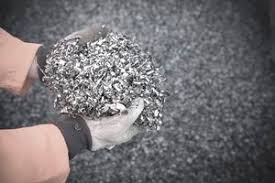

Metal Recycling Process
1. Collection
This is the first and most important step in metal recycling. It simply involves collecting all materials that are made of metals. The scrap metal yards are used as collecting centers for the metals. This process should be organized in such a way that there should be containers specifically designed to collect metals. Some people and business persons have established scrap yards whereby people are encouraged to collect different metals, take them there and be paid for what they have collected. Different metals cost differently at the yards.
2. Sorting
Once the metals have been collected, the next important step is to sort the metals. This involves separating what can be recycled form what is non-recyclable. It is essential to point out that the quality of metal recycled is very important. A high quality recycled product or item can only be created if the original materials used in the recycling process are of good quality. This therefore, calls for strict quality checkup during the sorting process.
3. Processing
After sorting, the next step is to compact or squeeze the metal. All the recycle materials are squeezed and squashed using machines so that they do not occupy so much space in the conveyor belts.
4. Shredding
After the crushing and breaking of the metal, the shredding process starts. The metals are broken down into tiny pieces or sheets to allow further processing. The small pieces have large surface to volume ratio that can be melted using less energy as compared to when they are in large pieces of metal. Normally, steel is changed into steel blocks while on the other hand aluminum is converted into sheets.
5. Melting and Purification
Melting of the scrap metal takes place in a large furnace. Each metal is taken to a furnace that is specifically designed to melt that particular metal based on its specific properties. The melting process uses a considerable amount of energy. However, the energy required for melting recycled metal is less compared to energy required to make metal from its raw material. The furnace is heated to appropriate degrees capable of melting the particular metal. Melting can take minutes or hours depending on how big the furnace is, the volume of metal placed in the furnace and the heat degree of the furnace.
